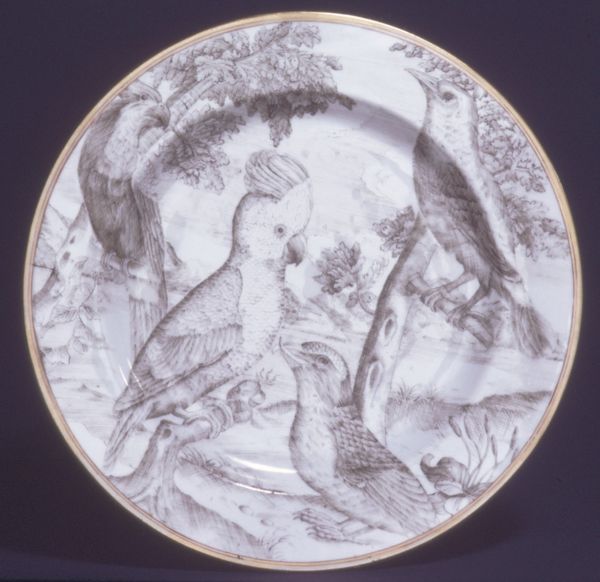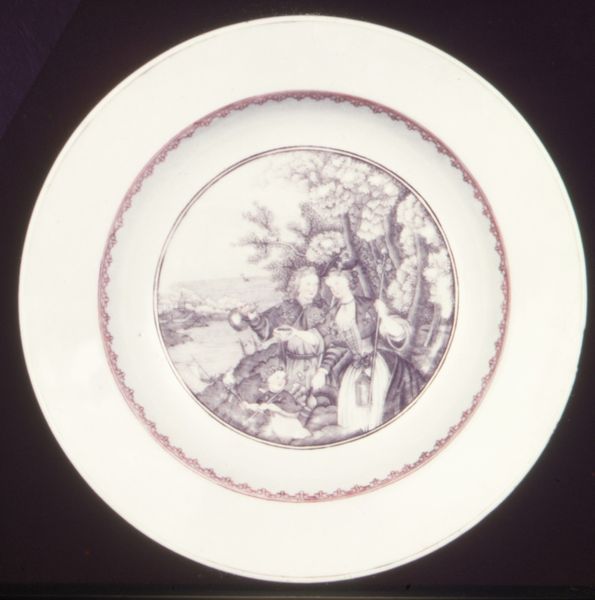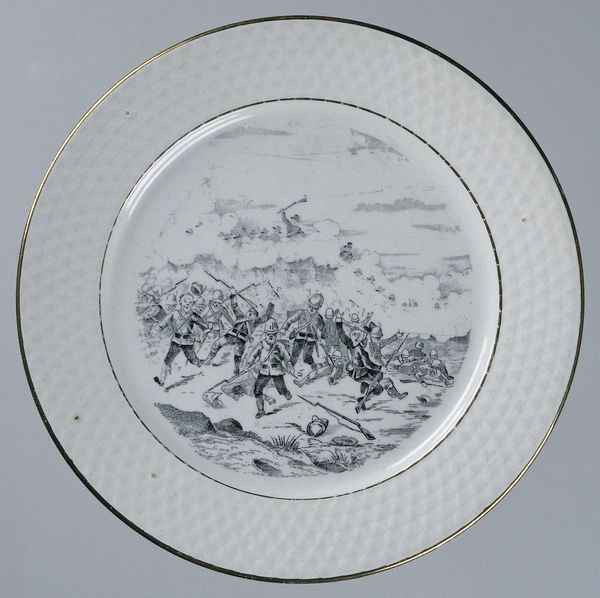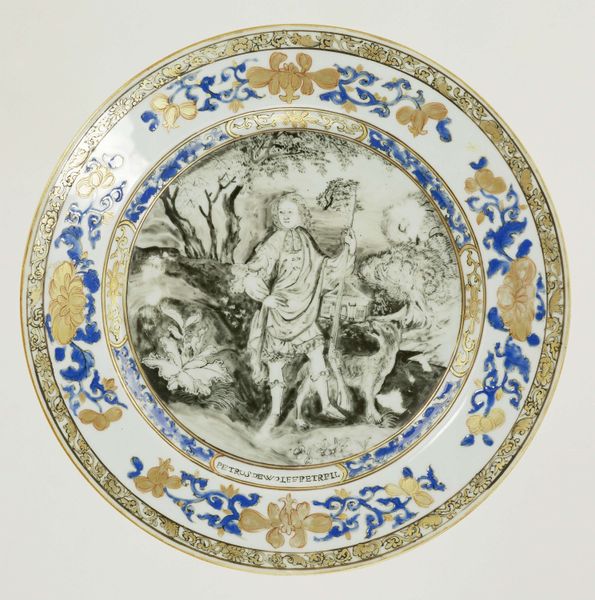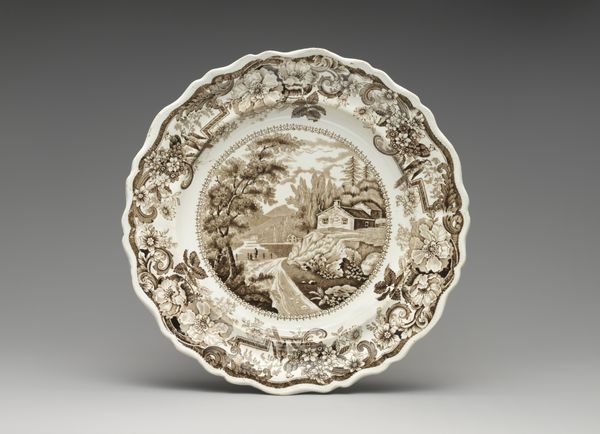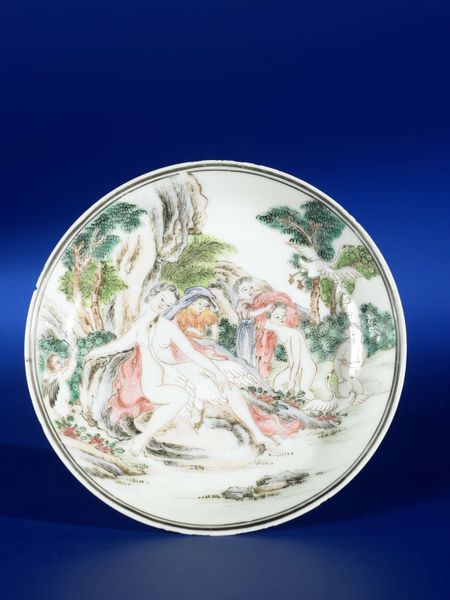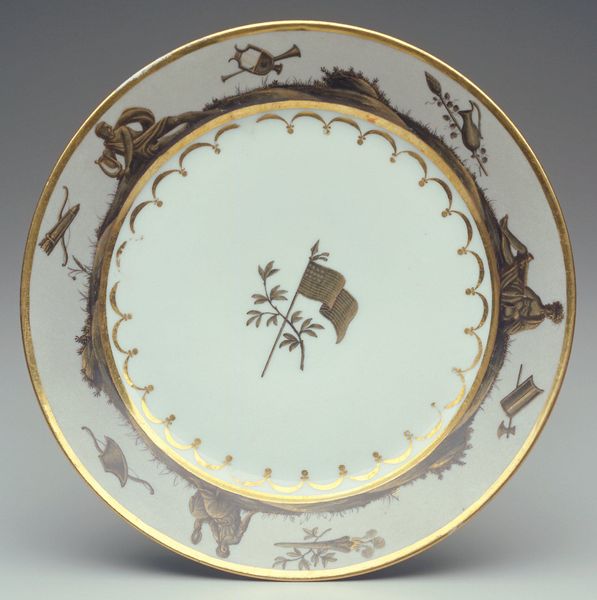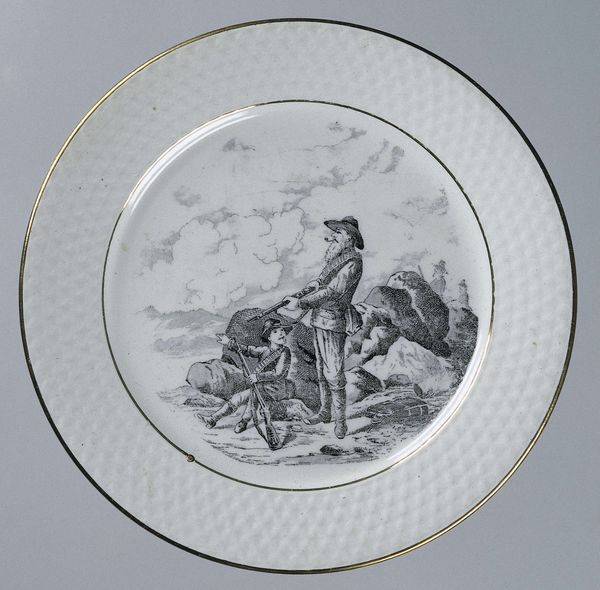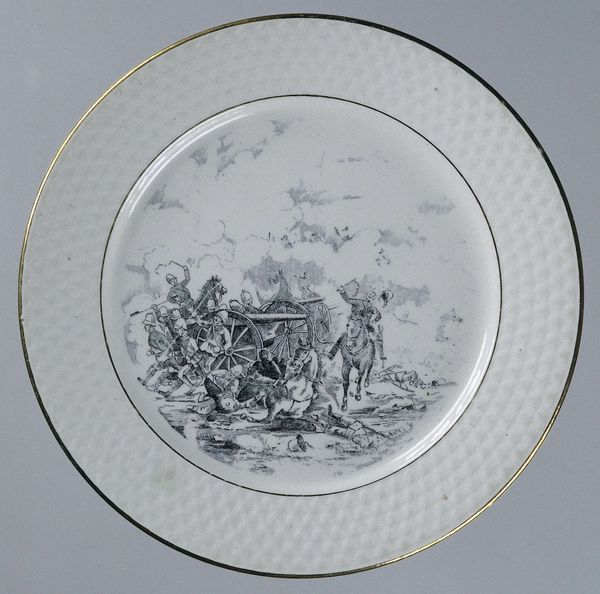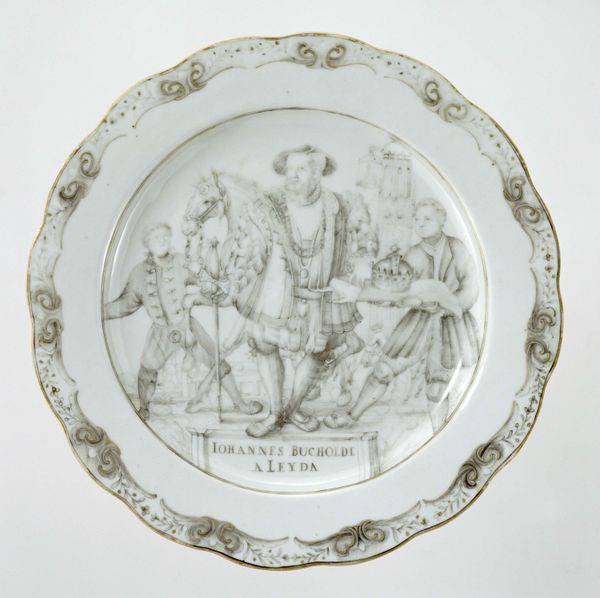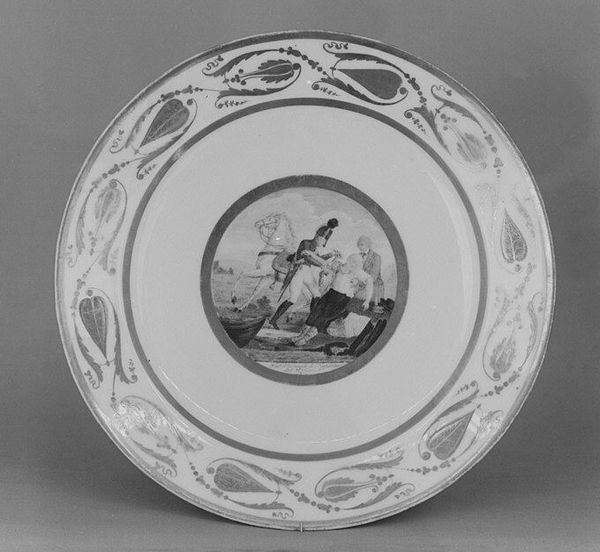
print, ceramic, porcelain, sculpture, engraving
#
baroque
# print
#
ceramic
#
porcelain
#
sculpture
#
ceramic
#
earthenware
#
decorative-art
#
engraving
Dimensions: Overall: 1 1/2 × 11 in. (3.8 × 27.9 cm)
Copyright: Public Domain
This plate was made by Pieter Boel, a Flemish artist, in the 17th century. Boel specialized in painting animals, often in the context of hunts or as allegorical figures, and here he has transferred that interest to the decorative arts. The scene depicts a group of eagles in a landscape, rendered in grisaille, a technique using shades of grey to create a monochrome image. We may ask, what does the imagery of eagles signify within its specific time? In the 17th century, the eagle was a common symbol of power, authority, and imperial rule. This plate may speak to the aristocratic patronage system of the period, or it may allude to the political ambitions of the elite. By depicting this scene on a plate, Boel is blurring the boundaries between fine art and decorative art, between aristocratic display and common accessibility. As historians, we can research the symbolism of animals in the 17th century, looking at emblems, literature, and popular culture. We can ask how this plate reflects the social and institutional context of its creation, and how it challenges or reinforces the existing norms. Ultimately, the meaning of this plate is contingent on its historical and cultural setting.
Comments
No comments
Be the first to comment and join the conversation on the ultimate creative platform.
